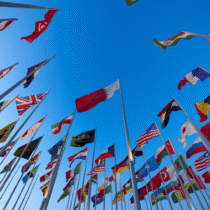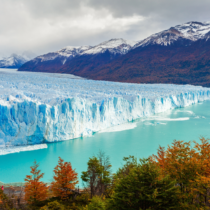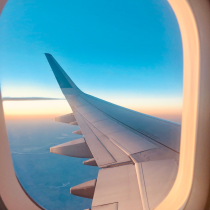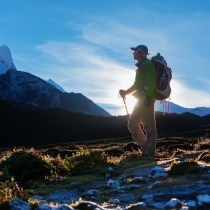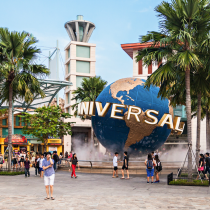Preparing for an international adventure involves more than just booking flights and accommodations. It requires careful consideration of what to pack to ensure a smooth and enjoyable experience. A well-thought-out packing list can make the difference between a comfortable journey and one filled with unnecessary stress.
Travelers should begin by considering the destination’s climate and cultural norms. Essential items typically include versatile clothing, travel documents, and any required medical supplies. Packing lightweight, durable gear helps manage luggage weight while maximizing utility on the expedition.
Moreover, adventure travel often entails various activities, from hiking to city tours. Keeping this in mind, a good mix of outdoor and casual wear, along with appropriate footwear, enhances the travel experience. By tailoring their packing list to the specifics of their adventure, travelers equip themselves for success.
Essential Travel Documents and Identification
Traveling internationally requires careful preparation, especially regarding essential documents and identification. Having the right paperwork readily available ensures a smooth journey. Here is what is crucial to consider.
Passports and Required Visas
A valid passport is mandatory for international travel. It should be valid for at least six months beyond the planned return date. Travelers must verify the entry requirements for their destination countries. Many countries require a visa for entry, which can range from a tourist visa to a business visa.
To avoid confusion, compile a list of required visas and the application processes. This may include embassy contacts or online applications. It’s wise to carry a photocopy of the passport and visa, keeping them in a separate location for safety.
Travel Insurance and Health Documentation
Travel insurance is a critical document for any international trip. It covers unexpected events such as trip cancellations, medical emergencies, and lost belongings. Ensure the policy includes adequate medical coverage.
Health documentation is also vital. Travelers should carry a copy of their vaccination record, especially in regions with specific health requirements. If prescription medications are necessary, bring enough supply along with a doctor’s note.
Tickets, Reservations, and Boarding Passes
Flight tickets should be confirmed and printed or saved on a digital device. It’s advisable to keep an organized travel folder for these documents. Hotel reservations should include confirmation numbers for check-in ease.
Boarding passes, either printed or digital, must be accessible during check-in. Having backup copies can be beneficial in case of device issues. Travelers should also confirm transportation arrangements to and from the airport for a seamless transition.
ID, Credit Cards, and Local Currency
In addition to a passport, a secondary form of identification, like a driver’s license, may be necessary. It’s advisable to bring several payment options, including credit and debit cards. Ensure the cards have international acceptance.
Carrying local currency is essential for immediate expenses upon arrival, such as transportation or meals. Use a secure wallet to store cash and cards, dividing funds for extra security. An emergency contact list can be helpful, including numbers for banks and local authorities.
Luggage and Packing Strategies
Selecting the appropriate luggage and implementing effective packing strategies are crucial for an international adventure. These choices can impact comfort and convenience throughout the journey.
Choosing the Right Bags
Choosing the right luggage is essential for hassle-free travel. Key options include suitcases, backpacks, and carry-on bags.
- Suitcases are ideal for longer trips with more clothing and gear. Look for durable materials and multi-directional wheels for easy maneuvering.
- Backpacks are great for travelers prioritizing mobility. A daypack is useful for day trips and excursions.
- A carry-on bag should be compact yet spacious enough for essentials. Airlines typically allow a maximum size of 22 x 14 x 9 inches.
Each traveler may prefer different bags based on their itinerary and personal style. It’s also wise to consider weight limits and airline restrictions when making a selection.
Packing Cubes and Organization Tools
Packing cubes are popular among seasoned travelers for their ability to streamline luggage organization. These compression bags can significantly optimize space.
They come in various sizes, allowing travelers to categorize items, such as:
- Clothing (e.g., shirts, pants)
- Toiletries (e.g., toothbrush, shampoo)
- Electronics (e.g., chargers, cameras)
Incorporating organization tools like zippered pouches or packing folders can enhance efficiency. An empty bag can also be useful for dirty laundry or souvenirs collected during the journey.
Keeping items organized not only maximizes space but also makes it easier to find essentials without unpacking everything.
Weight Limits and Airline Restrictions
Awareness of weight limits and airline restrictions is crucial to avoid unexpected fees. Many airlines impose strict rules on both carry-on and checked luggage. Typical carry-on weight limits average around 15-22 pounds. Checked baggage often has a weight cap of 50 pounds.
- Excess baggage fees can be significant, often reaching over $100 per extra pound.
- Check the airline’s website for specific guidelines.
Travelers should weigh their bags before heading to the airport. Using a packing checklist can aid in staying within the allowable limits, minimizing the risk of overpacking.
Clothing and Weather-Appropriate Essentials
Packing the right clothing and weather-specific items is essential for a successful international adventure. This ensures comfort while exploring and prepares for unexpected weather changes.
Versatile Clothing and Layering
When packing clothes, versatility is key. Choose items that can be mixed and matched for different outfits. Neutral colors work best for easy coordination. Layering is crucial for adapting to varying temperatures. Start with moisture-wicking base layers. These keep sweat away from the skin during physical activities.
Add insulating layers, like fleece or lightweight jackets, that provide warmth. Finally, a waterproof outer layer is essential for rain protection. This combination allows for adjustments based on climate and activity levels.
Shoes and Footwear for Adventure
Comfortable walking shoes are a necessity for sightseeing and adventure travel. Look for shoes with good arch support and cushioning. Opt for breathable materials to keep feet dry during long excursions. In addition to daily footwear, consider bringing a pair of sandals for relaxation.
For hiking, sturdy, waterproof boots are recommended. They provide ankle support and traction on rugged terrain. Packing extra pairs of socks, especially compression socks, can enhance comfort and reduce fatigue.
Weather Protection and Accessories
Weather-appropriate clothing includes accessories that protect against the sun and rain. Sunglasses safeguard eyes from UV rays while exploring outdoor sights. Packing a wide-brimmed hat offers additional sun protection and keeps the face shaded.
Sunscreen is vital for preventing sunburn, even on cloudy days. Lip balm with SPF is also important to protect the lips. Lastly, including rain gear such as a lightweight poncho or rain jacket can ensure readiness for sudden downpours. These essentials can significantly enhance the travel experience by keeping individuals comfortable and sheltered from the elements.
Practical Travel Essentials and Comfort Items
Packing for an international adventure requires careful consideration of practical essentials and items that enhance comfort. This section covers personal toiletries, health items, tech gadgets, and comfort solutions for a smoother travel experience.
Personal Toiletries and Health Items
Traveling requires essential personal items to maintain hygiene and health. A hanging toiletries bag is highly recommended for organizing items efficiently. Key toiletries include:
- Travel-sized toiletries: shampoo, conditioner, body wash, toothbrush, and toothpaste.
- First aid kit: band-aids, antiseptic wipes, and pain relief medication.
- Prescription medicine: ensure sufficient supply and carry a copy of prescriptions.
Consider including aerosols such as deodorant or sunscreen, keeping in mind airline restrictions. For personal comfort, pack items like tissues, hand sanitizer, and lip balm. A reusable water bottle is also practical for hydration throughout the journey.
Tech Gadgets and Power Solutions
Travelers increasingly rely on tech gadgets. Key devices often include a phone, laptop, tablet, or e-reader. A universal travel adapter is crucial for compatibility with different outlets. Consider a power bank for on-the-go charging, ensuring devices remain operational.
Beyond chargers, a portable charger ensures that gadgets stay powered during long travel days. Don’t overlook noise-canceling headphones, which provide comfort on flights or in noisy environments. Carrying a camera for capturing memories can add to the travel experience.
Convenience and Comfort On the Go
Convenience items greatly enhance travel comfort. A travel pillow or neck pillow provides essential support during long journeys. A daypack allows for easy access to snacks, a pen, and valuables during sightseeing.
Snacks can help maintain energy levels, while a waterproof phone case protects devices from potential damage. Compactly organizing personal items allows for better access. Prioritizing comfort essentials leads to a more enjoyable trip overall.


